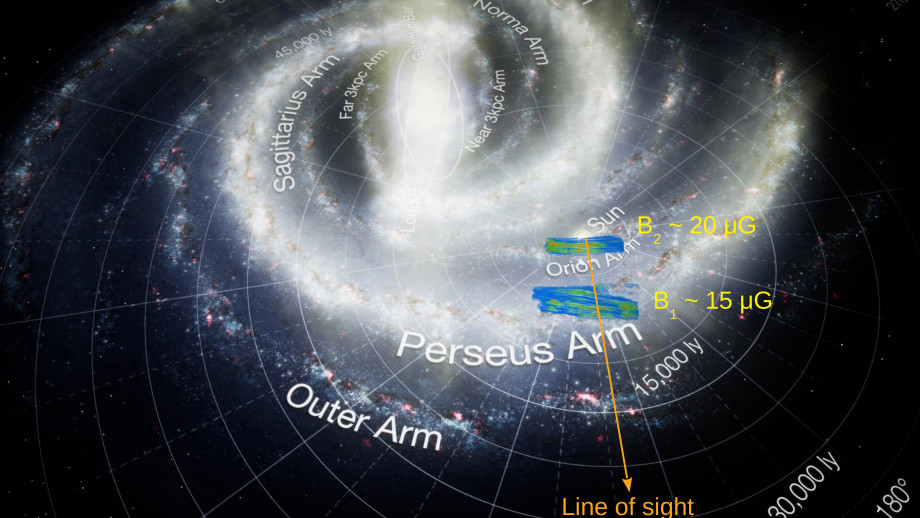Magnetic Field Tomography in Two Clouds toward Ursa Major Using H I Fibers
Tritsis, A., Federrath, C., Pavlidou, V., 2019
The Astrophysical Journal, 873, 38
[ ADS link ]
[ PDF ]
Abstract
The atomic interstellar medium (ISM) is observed to be full of linear structures that are referred to as "fibers". Fibers exhibit similar properties to linear structures found in molecular clouds known as striations. Suggestive of a similar formation mechanism, both striations and fibers appear to be ordered, quasi-periodic, and well aligned with the magnetic field. The prevailing formation mechanism for striations involves the excitation of fast magnetosonic waves. Based on this theoretical model, and through a combination of velocity centroids and column density maps, Tritsis et al. developed a method for estimating the plane-of-sky (POS) magnetic field from molecular cloud striations. We apply this method in two HI clouds with fibers along the same line of sight (LOS) toward the ultra-high-energy cosmic-ray (UHECR) hotspot, at the boundaries of Ursa Major. For the cloud located closer to Earth, where Zeeman observations from the literature were also available, we find general agreement in the distributions of the LOS and POS components of the magnetic field. We find relatively large values for the total magnetic field (ranging from 10 to 20 μG) and an average projection angle with respect to the LOS of about 50°. For the cloud located further away, we find a large value for the POS component of the magnetic field of 15+8-3 μG. We discuss the potential of our new magnetic field tomography method for large-scale application. We consider the implications of our findings for the accuracy of current reconstructions of the Galactic magnetic field and the propagation of UHECR through the ISM.

3D view of the two clouds and their locations in the Galaxy. The reconstructed 3D magnetic field structure of each cloud is shown in blue, green and orange.
Acknowledgements
We thank R. Skalidis, G. Panopoulou, K. Tassis, E. Ntormousi, and G. Magkos for useful comments and discussions. We thank the anonymous referee for comments that helped improve this work. C.F. acknowledges funding provided by the Australian Research Council (Discovery Projects DP150104329 and DP170100603, and Future Fellowship FT180100495), and the Australia-Germany Joint Research Cooperation Scheme (UA-DAAD). 3D visualizations were made with the Space Nebula Plugin for Unreal Engine 4 (Fabian Fuchs & Linus Fuchs, private communication: Thauros-Development@outlook.com). The data analysis presented in this work used high-performance computing resources provided by the Leibniz Rechenzentrum and the Gauss Centre for Supercomputing (grants pr32lo, pr48pi and GCS Large-scale project 10391), the Partnership for Advanced Computing in Europe (PRACE grant pr89mu), the Australian National Computational Infrastructure (grant ek9), and the Pawsey Supercomputing Centre with funding from the Australian Government and the Government of Western Australia, in the framework of the National Computational Merit Allocation Scheme and the ANU Allocation Scheme.
© C. Federrath 2025

